Yunlong Lake
Located in the southwest of Xuzhou City, Jiangsu Province, Yunlong Lake is the main scenic spot of Yunlong Lake Scenic Area in Xuzhou, formerly known as "Stone Dog Lake", which was formed in the Northern Song Dynasty at the latest. Yunlong Lake lies east of Yunlong Mountain, west of Han Mountain and Tianqi Mountain. Nanluquan Mountain and Pearl Mountain. It is surrounded by mountains on three sides and faces the city on one side.
The raw water surface of Yunlong Lake is 5.8 square kilometers and the land surface is 5.6 square kilometers. With Huzhong Road as the boundary, the circumference of East Lake is about 8.1 kilometers, the length of West Lake is about 7 kilometers, and the circumference of the whole lake is about 12 kilometers. If it includes the scenic area of Shangxiao South Lake (with a total area of 1.661 square kilometers, of which the water area is 0.962 square kilometers), the surface area of Yunlong Lake has reached 6.76 square kilometers and the land area is 6.3 square kilometers.
Yunlong Lake is the best natural landscape in Xuzhou, and it is also one of the landmark scenic spots in Xuzhou. In August 2016, it was awarded National AAAAA Scenic Spot.
Shek Gou Lake
When Su Shi was appointed to Xuzhou, he visited Yunlong Mountain and Yunlong Lake from Binzuo bureaucrats. Standing on the hill or by the lake, looking out, a depression is like a big ditch, which is surrounded by mountains on three sides and faces the city on one side. In Su Shi's poem "Answering the King and Dingmin", he said, "It's better to write in the Liutai Temple than to know the flag troop to Shigou." Tai Temple is Taitou Temple, Shigou refers to Yunlong Lake. Therefore, it is named "Shigou Lake" by its shape. Later, it was passed down as "Stone Dog Lake". The name of Shigou Lake has a history of nearly one thousand years.
Shi dog Lake
History of the Ming Dynasty records: "(Yellow River) burst the Kuishan Embankment in Xuzhou, Guanzhou City in Northeast China. The water depth in the city is one Zhang and three feet, and the bridge from Nanmen to North Da'an Bridge in Yunlong Shanxi enters Shigou Lake. According to Xuzhou Historic Records, Shigou Lake is called Shigou Lake because the water of Nanshan Mountains converges here when it rains heavily, and it lasts for a long time. Another legend has it that during the Ming and Wanli Dynasties, an old Mason lived near Yunlong Lake, and the Mason kept a big black dog. One day a big black dog was killed and skinned by a rich man to cure his illness. When the old Mason was sad, he went to Yunlong Mountain and found a big stone. He carved a stone dog according to the shape of a big black dog and put it on the lake. The stone dog not only watches the nursing home, but also absorbs water when the lake is waterlogged, spits water when the lake is dry, and the people keep harvest during the drought and flood. The stone dog became a God dog. People call this lake Stone Dog Lake in memory of Stone Dog Lake. The name of "Stone Dog Lake" has a history of more than 400 years. For many years, although the lake has been dredged several times, stone dogs have not yet been seen. I hope that one day, stone dogs will see the sky again.
Er Jia Sichuan
In March of the second year of Yuanfeng in Northern Song Dynasty (1079), when Xuzhou was transferred to Huzhou, Su Shi expressed his deep affection for Xuzhou's father and his attachment to Xuzhou's scenery. Among the fifth one is "Where does Butian go, South Shifoshan Road?" There is Erjiachuan, a thousand border species. Poetry. Shifo Mountain in the poems refers to Yunlong Mountain, Erjiachuan refers to Yunlong Lake, so Yunlong Lake has the nickname "Erjiachuan". Or cloud: "Shifoshan, 25 miles southwest of (Meizhou) prefecture, under Erjiachuan, plaster, suitable for planting."
Subo Lake
The History of Song Dynasty records that when Su Shi was appointed Xuzhou Zhizhou, he once "led him to build the southeastern Changdi, the first stage of the circus, which belonged to the city. Rain day and night, the city does not sink three editions. Shi Lulu is above it, but he can't get through his family. In memory of Su Shi's achievements in water control, Yunlong Lake is also known as "Su Bo Lake". "Rebuilding the monument of Yunlong Lake" contains: "Yunlong Lake to Shigou Lake, the name of the Yudaihe River, traceable to Tujianquan, and the Kuihe River, known as Lake Subo, to Myanmar East Slope of the merits of water control. "Xuzhou Prefecture chronicles in the new millennium edition" contains: "Three miles southwest of the city, there is Shigou Lake (dustpan depression in ancient times). In the Ming Dynasty, Panji tamed and picked up the Kui River, started from Lake Subo and built a new lake. "He Chen Pan Ji tamed and picked up the Kuishan branch river, from Lake Subo into the river.
Dustpan depression
The monument of Yuanmengyuan in Yunlong Lake reads: "Yunlong Lake was originally a depression surrounded by mountains and negative Guo, and its shape is like a dustpan, so it is called dustpan depression." Dustpan is a household utensil with three sides and one side gap. People are winnowing wheat and rice to get rid of bran. Yunlong Lake has Yunlong Mountain in the east, Dashan Tou in the south, Lali Mountain in the west, and Hanshan Mountain in the west, but there is a gap in the north, which is like a dustpan. Therefore, it is named "dustpan depression" according to its shape. It is said that the name of "dustpan depression" has a history of more than a thousand years.
Hongwei Lake
In December 1959, the people's government of Xuzhou formally launched the Shigou Lake Reservoir Project in order to solve the perennial flood and threaten the urban safety of Xuzhou City. Tang Hainan, then Deputy Commissioner of Xuzhou Regional Administration, made a proposal to rename the Shigou Lake Reservoir under construction as Yunlong Lake. The municipal government adopted his proposal that Shigou Lake be renamed Yunlong Lake. At the end of 1960, the embankment of Yunlong Lake was built, and the flood storage began. The surface runoff in the catchment area was intercepted and stored through the reservoir, which reduced the threat of upstream mountain torrents to the urban area. In 1967, under the influence of the Cultural Revolution, Yunlong Lake was once renamed Hongwei Lake, but it was not long before the name "Yunlong Lake" was restored.
yunlong lake
"Rebuilding the monument of Yunlong Lake" contains: "Xuzhou Municipal People's Government dredged the lake in 1958, dredged and stacked dikes, crossed canals and opened gates, military and civilian work, two easily cold and summer, eight miles long dike lying north, ten thousand mu of green ripples. On the completion of the project in February 1960, there was a new name of Yunlong Lake. Mountains are shaped like dragons, while waters are painted with dragons.
Located in Quanshan District of Xuzhou, Yunlong Lake has a warm temperate humid and semi-humid monsoon climate with distinct seasons. It has the characteristics of warm spring, warm autumn, cold winter and hot summer. The annual average temperature is 14.5 degrees. The days with the highest annual temperature greater than or equal to 30 degrees are 59 days, the annual sunshine hours are 2280-2440 hours, the annual frost-free period is about 210 days, and the annual precipitation is 802 days. .4mm or so.
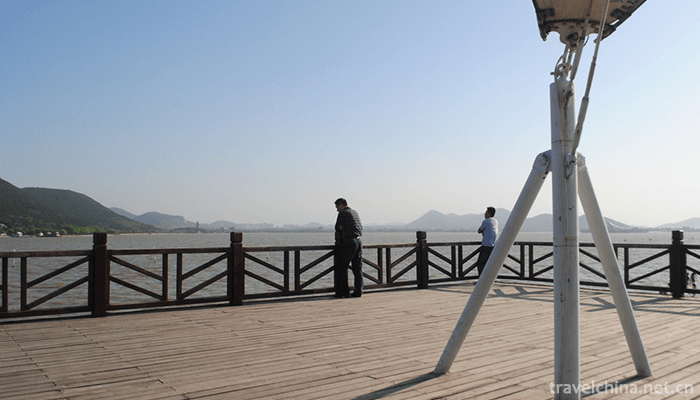

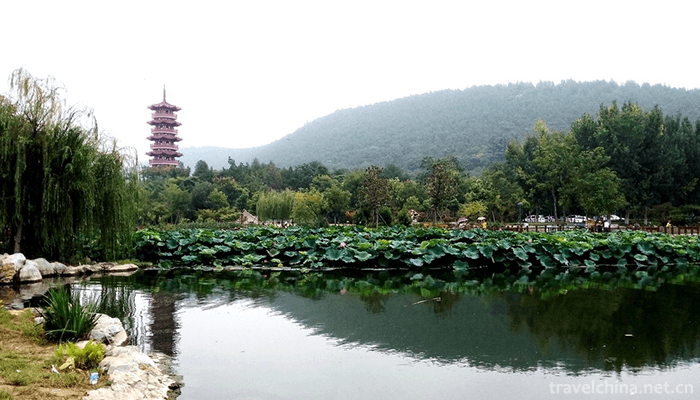
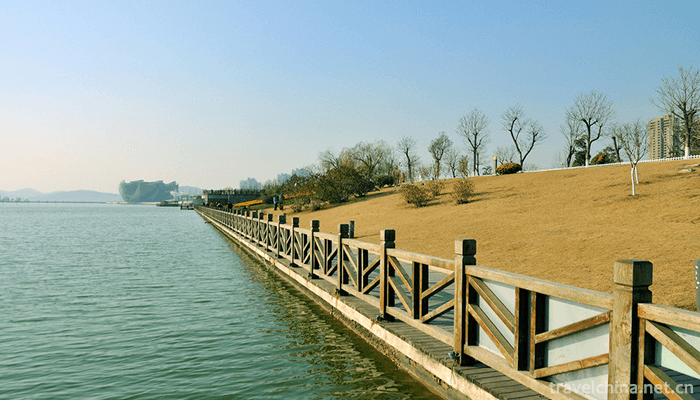
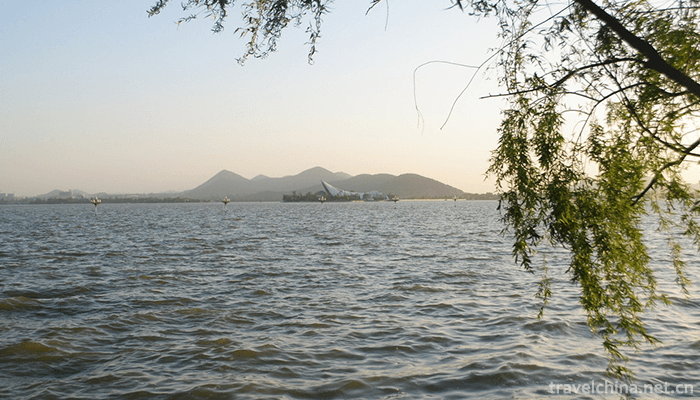
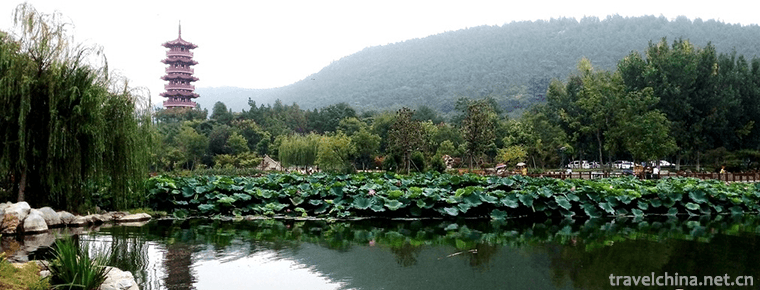
-
1.The Beijing Palace Museum
The Beijing Palace Museum was established on October 10, 1925, and is located in the Forbidden City of the Beijing Palace Museum. Based on the palaces of Ming and Qing dynasties
Time 2018-11-24 -
2.Dazhao Temple Scenic Area in Lhasa
Dazhao Temple, also known as "Zula Kang" and "Jue Kang" (Tibetan meaning for Buddhist temple), is located in the center of the old city of Lhasa. It is a Tibetan Buddhist temple bu
Time 2018-12-12 -
3.Tian Xiang Yuan
Tianxiang Garden is located in Nanchang City, Jiangxi Province, Qingshan Hunan Avenue, formerly known as the West Lake Garden. Founded in 1976, with an area of 112 mu
Time 2019-02-22 -
4.Wild Elephant Valley in Xishuangbanna
The Wild Elephant Valley in Xishuangbanna is located in Mengzi Nature Reserve and "UNESCO Man and Biosphere Reserve" of Xishuangbanna National Nature Reserve
Time 2019-02-25 -
5.Huizhou three carving
The three carvings in Huizhou are a kind of local traditional carving art. They refer to three kinds of local traditional carving crafts, i.e. wood carving, stone carving and brick carving,
Time 2019-05-04 -
6.Gold and Silver Fine Craft
Gold and silver fine craftsmanship, Huangpu District of Shanghai, Nanjing City of Jiangsu, Jiangdu traditional handicraft, one of the national intangible cultural heritage.
Time 2019-05-07 -
7.Qiang Nationality Year
The Qiang Year is a traditional festival of the Qiang people, also known as the Year of the Youth, which is held on October 1 of the lunar calendar every year. In Maoxian area, there are special regul
Time 2019-06-10 -
8.Small febrile coma
Xiao Redun is a kind of traditional Wu rhetoric banter popular in Jiangsu, Zhejiang and Shanghai. It is also known as "Xiaogongshu", commonly known as "selling pear ointment candy"
Time 2019-07-06 -
9.Yangzhou lacquerware decoration skills
Yangzhou lacquerware painting process is cumbersome, the step is "batch putty scrape gray, brush paint and push light". During the Warring States Period, Yangzhou lacquerware decoration tech
Time 2019-07-10 -
10.Double Ninth Festival chong yang jie
The Double Ninth Festival refers to the ninth day of September in the lunar calendar every year. It is a traditional Chinese folk festival. In the Book of Changes, "Nine" is defined as the n
Time 2019-08-10 -
11.Beijing Union University
Beijing Union University was founded in 1985 by the Ministry of education. It is a comprehensive university in Beijing. Its predecessor was the 36 University branches in Beijing in 1978. After more th
Time 2019-09-06 -
12.Mianyang scenic spots
Mianyang City is a famous historical and cultural city in Sichuan Province, the main node of the dajiuzhai international tourism circle and the Three Kingdoms Shu Road culture international tourism line. It has a 5A level scenic area of "Beichuan Qiang city tourism area"
Time 2020-12-14